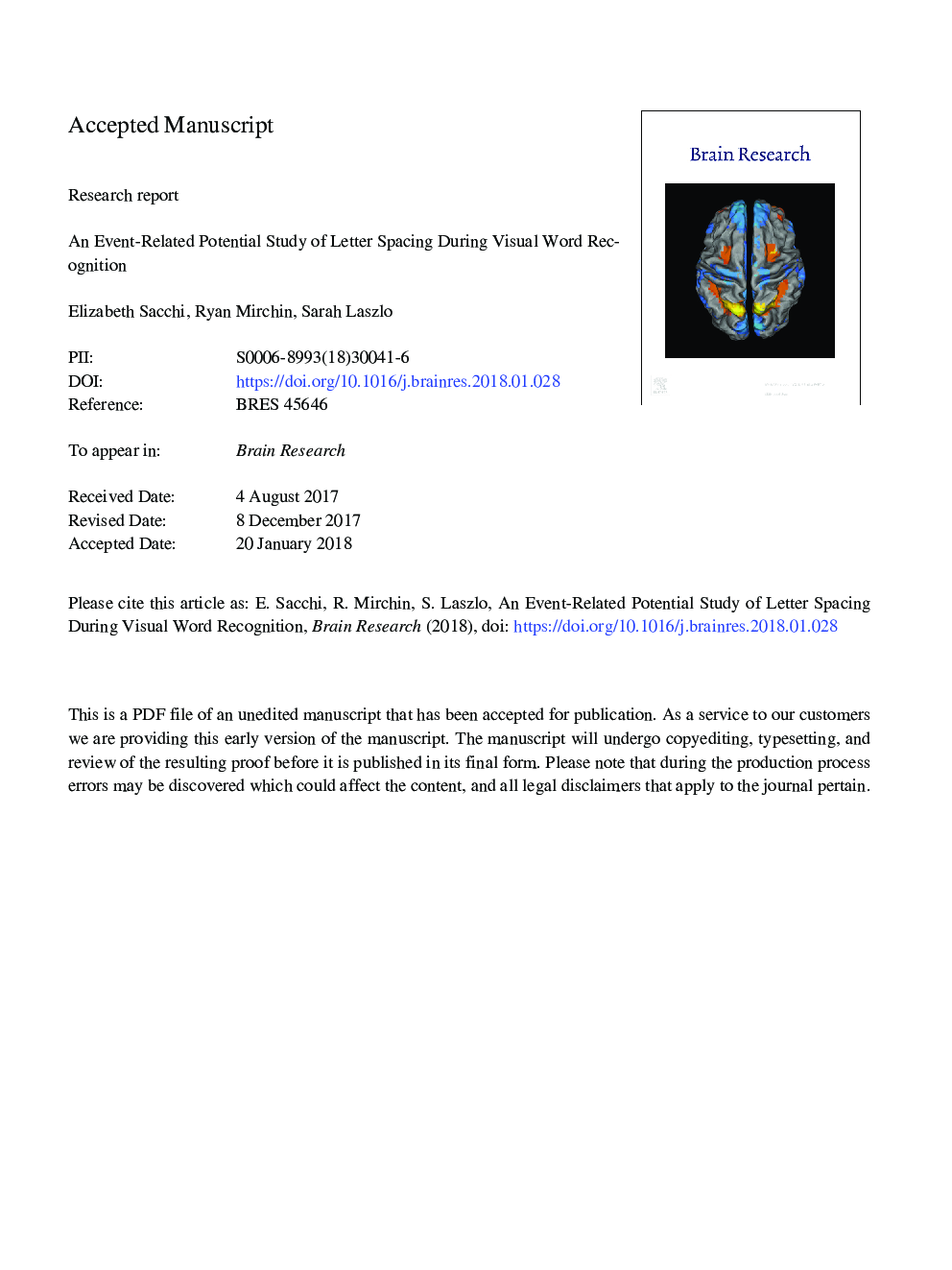| Article ID | Journal | Published Year | Pages | File Type |
|---|---|---|---|---|
| 8839869 | Brain Research | 2018 | 58 Pages |
Abstract
Increasing spacing between letters in words (e.g., s p a c e vs. space) helps children and adults read more fluidly and with fewer errors. This effect has been demonstrated behaviorally, chiefly through lexical decision reaction time and total paragraph reading time. To date, however, no electrophysiological work has examined the letter spacing effect, resulting in little insight regarding how letter spacing impacts “hidden” levels of processing between apprehension of the word form and the final behavioral outcome. Here, we examined how varying levels of interletter spacing (crowded, standard, and increased) impact ERPs elicited by words and other item types (pseudowords, illegal strings, and a false font). Results indicate that letter spacing does not impact the ERP within the first second after viewing a wordform, but that it does have downstream effects as indicated by data collected using a priming design. Further, the facilitation of downstream processing afforded by increased spacing seems to be greater for more word-like stimuli (e.g., greater for words than for consonant strings, etc). Results are discussed as being somewhat inconsistent with prevalent views of the mechanism of the letter spacing effect (i.e., crowding).
Keywords
Related Topics
Life Sciences
Neuroscience
Neuroscience (General)
Authors
Elizabeth Sacchi, Ryan Mirchin, Sarah Laszlo,
